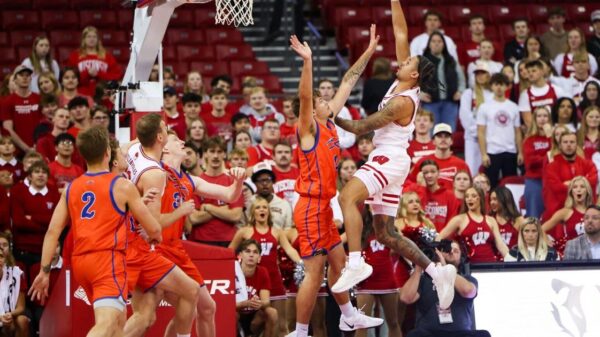The firing of head coach Brian Kelly has plunged the athletics program at Louisiana State University (LSU) into chaos, with a staggering $53 million buyout now owed to the former coach. This financial burden has drawn sharp criticism from Louisiana Governor Jeff Landry, who publicly condemned the athletics administration for what he termed fiscal irresponsibility amid a struggling football season.
During a press conference focused on food assistance programs, Landry redirected attention towards the athletics department, specifically targeting Scott Woodward, LSU’s athletic director. The governor expressed his dissatisfaction with the financial implications of Kelly’s dismissal, highlighting the disconnect between ticket price increases and the team’s lack of success. “I was not happy about raising ticket prices while we were having a losing season and we were paying a coach $100 million and not getting results,” Landry stated.
The governor’s remarks have reverberated through college athletics circles, prompting discussions about accountability and the financial sustainability of coaching contracts. Landry indicated plans to involve the state attorney general in reviewing the next head coach’s contract to clarify the extent of state liabilities.
Widespread Coaching Changes Signal Financial Crisis
LSU’s situation is not unique; a total of ten schools in the Football Bowl Subdivision (FBS) have dismissed coaches since September 23, 2023, with combined buyouts amounting to $169 million. This trend has emerged at a time when colleges face unprecedented financial pressures, including a $2.8 billion settlement that mandates revenue sharing with athletes, significantly impacting institutional budgets.
The landscape of college football has changed dramatically, with escalating expenditures often outpacing revenue growth. According to the Knight-Newhouse College Athletics Database, spending on football at Penn State University surged by 113% over the past decade, while overall departmental revenues increased by only 83%. Similarly, LSU reported a 44% rise in football spending, contrasted with a 40% increase in revenues during the same period.
Landry’s public criticism of LSU’s financial decisions has resonated with others in college athletics. A member of a board of trustees from another institution remarked, “Finally, someone said it out loud. This is so irresponsible.” The mounting financial obligations for coaching contracts and facilities have led to a pervasive sense of concern regarding the sustainability of current practices.
The Uncertain Future of College Football Economics
As universities grapple with inflated coaching salaries and the associated buyouts, the question of funding has become increasingly urgent. The traditional belief that football serves as a lucrative revenue source for athletic departments is being challenged, as many programs struggle to operate in the black.
Landry’s concerns reflect a broader sentiment within the college sports community. A board member from an affected school acknowledged the grim reality, stating, “I have no idea. The money does not exist.” This sentiment underscores the precarious financial position many athletic departments find themselves in, particularly as they attempt to maintain competitiveness in a rapidly evolving environment.
The scramble for funding is evident as universities seek private investments and donor contributions to offset the costs of coaching salaries and facility upgrades. For instance, Virginia Tech recently announced a proposed $229 million investment in athletics over the next four years, while seeking to limit student fee increases.
Despite these efforts, the trend of escalating spending shows no signs of abating. Curt Cignetti, who has transformed the football program at Indiana University, recently signed an eight-year contract worth $93 million, all guaranteed. This reflects a broader trend where even struggling programs are compelled to invest heavily in coaching talent.
In the wake of Kelly’s departure, LSU is now without a football coach, an athletic director, and a university president, as William Tate left for a position at Rutgers in May. Woodward’s potential exit strategy adds another layer of uncertainty to the already tumultuous situation. The financial obligations continue to mount, with Woodward reportedly owed approximately $6.4 million in a buyout.
As LSU navigates this crisis, the implications of its decisions extend beyond the bayou, highlighting the urgent need for accountability and sustainable practices in college athletics. The ongoing evolution of financial dynamics within the realm of college football underscores the challenges that lie ahead for institutions attempting to balance competitiveness with fiscal responsibility.






































































